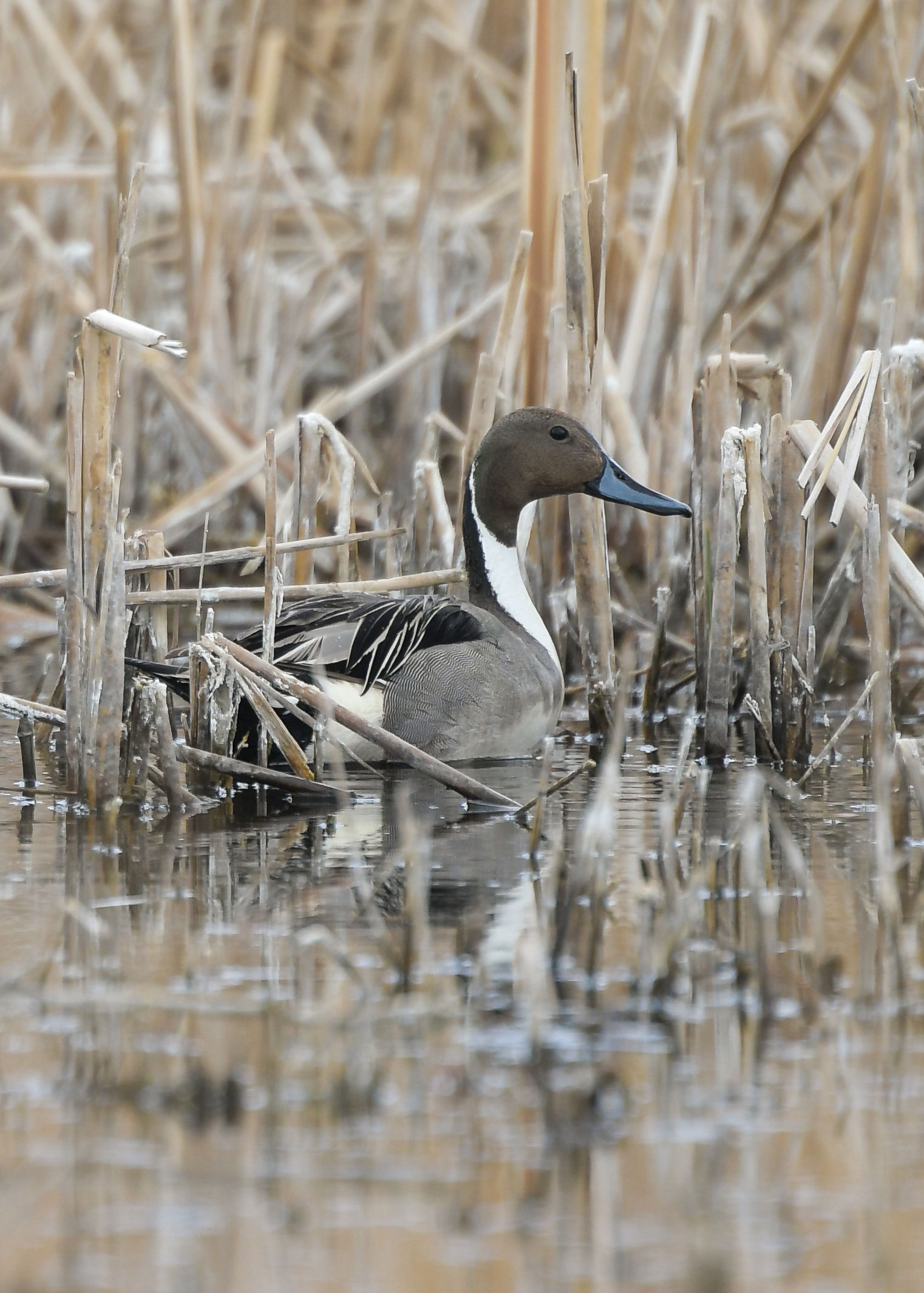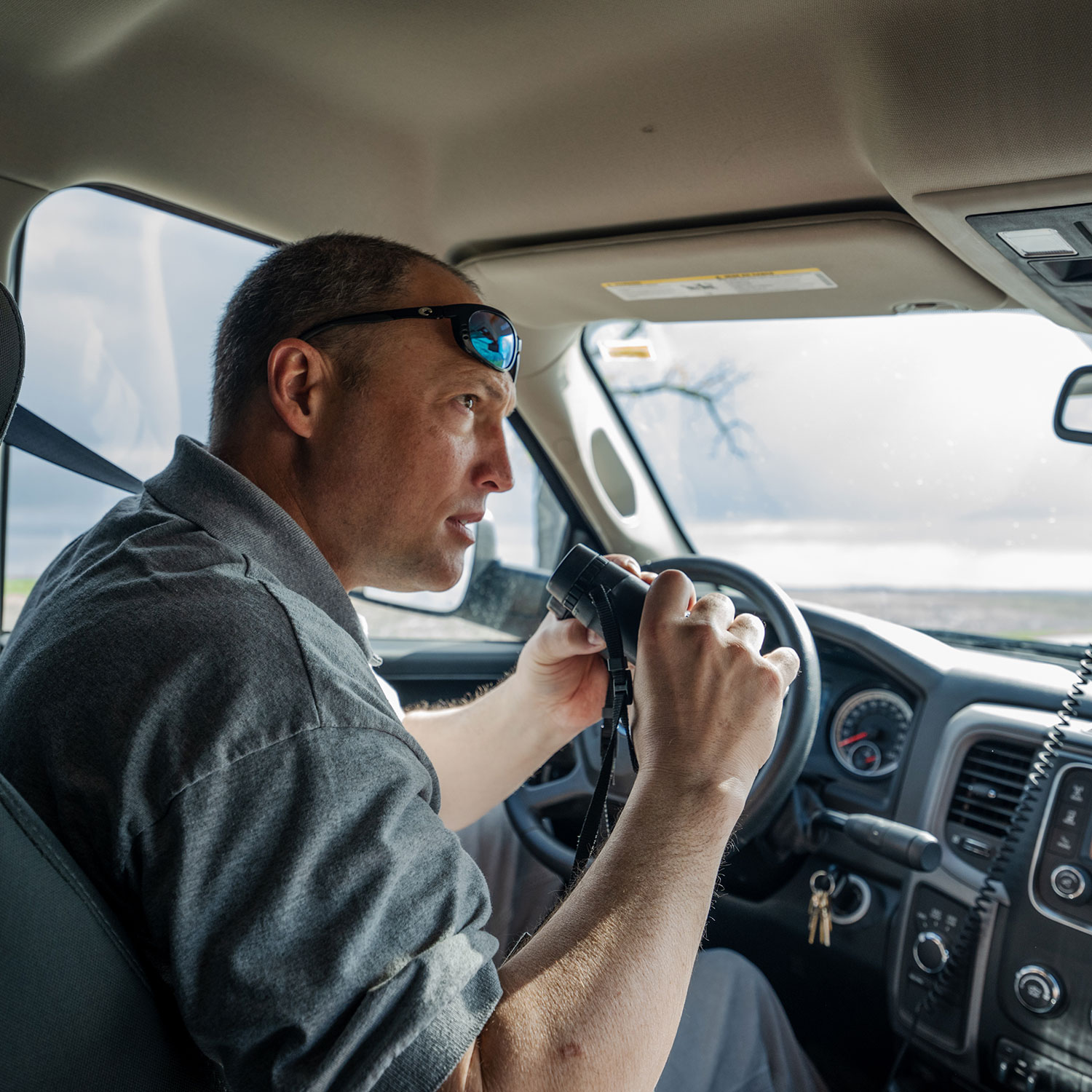Breeding Duck Survey at 75 Years
Ron Wilson

May 16 was significant.
That day, a Monday that fell more than a month before the first day of summer, marked the start of the longest running breeding waterfowl survey in the world.
Counting this year, the North Dakota Game and Fish Department’s annual breeding duck survey has run uninterrupted for 75 years.
There is some pride in the survey that has long provided breeding duck population estimates, an annual index of wetlands on the landscape and, among other things, sightings of upland game, coots and crows.
“It’s certainly a very unique dataset and impressive in its longevity and scale,” said Mike Szymanski, Game and Fish Department migratory game bird management supervisor. “Being a statewide survey in the most important waterfowl state in the lower 48, it’s a pretty big accomplishment.”
Because the survey has continued without pause makes it even more remarkable, especially when you consider that many wildlife management efforts were sidelined around the country in 2020 and 2021 during the pandemic.
“We were able to make some changes, some significant changes, to run the survey in 2020,” Szymanski said. “We had people who were willing to take on single observer roles and work different types of routes and we didn’t stay overnight, so it was a lot of work for folks to keep the survey going. But we have people who are very dedicated to the survey and the data that it provides.”
That dedication is nothing new, as there is a long list of wildlife professionals who guided the survey from its early years and beyond.
“From 1969 through 2021, the top 10 individuals on that list for that time period accounted for 63% of the observation years,” said Szymanski, who participated in his first breeding duck survey in 2005. “So, there were 44 observers during that time period and 10 of them are very core individuals.”

Ryan Herigstad (front) and Mike Szymanski run the Game and Fish Department’s annual breeding duck survey.
The annual survey begins sometime in May, depending on how spring shakes out. Every year is a little different in North Dakota. There is no average spring it seems like.
“Historically, one of the things Mike Johnson (retired Department game management section leader) said when referencing the old timers was that it was time to do the survey when the tree leaves were in the mouse ear stage, but that’s gotten real hinky over the last 15 years,” Szymanski said. “I think as our climate has shifted and we have timing differences going on in spring where leaf emergence has gotten quite early, but wetland phenology is still maybe lagging behind and duck migration is behind a little bit as well.
The survey this spring started about a week later than typical, thanks to a winter that refused to loosen its grip on North Dakota. Szymanski anticipated a changed landscape compared to an incredibly dry 2021.
“We’re getting back to pretty wet conditions, which is good for attracting pairs and, in some cases, good for providing different places for ground-nesting waterfowl,” he said. “But remember, the drought last year was not just in North Dakota, but in prairie Canada, so duck production was quite poor … the fall flight last year was pretty small. So, we’re kind of expecting to see lots of water and probably not many ducks as we have in the past, but that’s why we do the survey because we don’t know for sure. We might be surprised.”

Mike Szymanski ran his first breeding duck survey in the state in 2005.
Biologists have seen major changes during 75 years of survey work including the introduction of the Conservation Reserve Program and quality nesting habitat, to drought, to an abundance of water on the landscape.
“Our habitat conditions right now are looking a little rough as we've lost CRP and other good nesting cover over the last 15 years,” Szymanski said. “But throughout time, we've seen some huge changes in 75 years of the survey going through various drought periods, to when conditions on the landscape became super good for ducks, and it really had that high capacity for hunting opportunities.”
The heyday, the big era for ducks in North Dakota, Szymanski said, was 1994-2020, when good water conditions teamed with good nesting conditions, and there was way fewer red fox on the landscape.
“When the skies opened up and dropped 7 inches of rain over most of North Dakota the summer of 1993, it was just ‘to the moon’ from there,” Szymanski said. “And that's our big era for ducks in the state from 1994 to 2020. During that time, we had a much wetter cycle, better wetland conditions overall, despite drainage that's gone on over time, and then having all that program grass across the countryside, providing secure nesting habitat for good production on a very consistent basis. In 2002, for example, we hit a record high breeding duck population estimate on our state survey with about 5.4 million ducks.”
Unfortunately, after losing about 65% of CRP across the state and other grass habitat suited for nesting ducks, 2021 showed itself as one of the first years that started to look like the old era for ducks prior to 1994.
“We had a couple of recent years before that where we dipped below 3 million ducks in the survey, but we still had a decent number of wetlands and grass. But 2021 was a very stark difference where it looked like kind of the old days of the 80s, where it was just looking real rough,” Szymanski said. “We're going to have a wet year this year, and that could bring our number back up above 3 million birds in the survey, but for us to maintain that kind of average where we were very often between 3 and 4 million breeding ducks in the annual state survey from 1994 to 2020, and very oftentimes exceeding 4 million ducks, we have to have a lot more grass come back to the landscape in our high wetland areas.”

